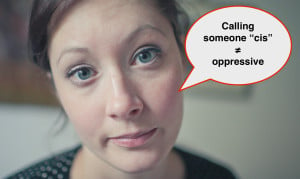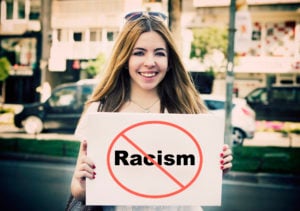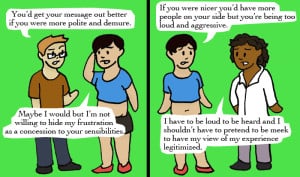
A group of people joining hands together.
Back in the early nineties Ma and I lived in a one bedroom apartment with crappy brown carpeting, cottage cheese ceilings, the heat thick and rising. Ma always out working while I fried up mushrooms and listened to her Diana Ross and the Supremes albums.
Sometimes, the lights cut off. Back then the bills would change colors to warn you when it was time to pay up or get shut off. Pink was the scarlet color — the shameful, shuffle-down-to-the-church-and-beg-for-help color.
Back then food stamps were actual paper slips handed over at the checkout counter. Ma argued with the clerk, “Could it be that much? How could it be?” while the clerk pointed out specialty items not covered by the stamps — some Hostess Twinkies, an embarrassing pack of Kotex.
Families below and beside us got evicted. Rent was affordable for Los Angeles, something like $700, at the time, for a two bedroom. But in LA, $700 and by the freeway meant roaches — never-ending roaches.
The babies in the building had asthma; one curly haired kid had an oxygen machine. We slept with our windows open and listened to the skateboarders glide and fumble in the carport.
Then one day, the single mom, her teenage son, and the baby with the oxygen tank found a notice on their door and shuffled that pink bill shame, trash bags filled with their things trailing behind them.
The reality is, millions of American families are evicted every year.
One powerful way people are fighting evictions is by coming together and starting tenant’s movements. It may seem radical but tenant’s movements have a long history in Europe and the United States.
In Boston, Vida Urbana/Boston City Life bargained for two buildings with 435 units into “affordability agreements.” Meanwhile, in Buffalo, the fifth poorest city in America, the Buffalo Tenants United took this same model to public housing complexes.
Martin Luther King Jr. used the rent strike to confront oppressive landlords in Chicago in the 1960s, and in the 1990s, St. Thomas public housing activists such as Robert Horton, who goes by the name Kool Black, helped form the first of their kind of networks for community policing and after school activities for kids.
St. Thomas was one of the first public housing projects to establish a board of residents who worked with nonprofits in the area to ensure that government-funded services in public housing equally benefited residents.
And, with San Francisco’s recent five-month rent strike in a Midtown building, the idea of using direct action has once again started to build steam.
Gentrification can seem like an impossible thing to win against, but there are times when the people conquer.
Here are three accounts of cities where neighbors came together and won:
1. Los Angeles
En route to The Goodwill in Los Feliz, one of L.A.’s small walking neighborhoods famous for its independent bookstores, small theatres, and late night diners, I pass a building on the corner of Rodney and Prospect. In the windows are bright yellow signs that say “Evicted.”
The 14 residents of the building on Rodney Drive were evicted from their rent-stabilized apartments.
Their landlord was able to evict them under a local law passed in 1985 called the Ellis Act. Under this law, a landlord can evict an entire property’s residents with 120 days’ notice for most tenants, or a full year’s notice for senior citizens and disabled tenants.
If the landlord tries to re-rent the apartment within five years, then the tenant has a right to reclaim his or her old apartment at the same rate they were paying when evicted. After five years, the landlord can then re-rent that unit at market rates.
The senior citizens and low-income residents who watched rents around them double and then triple, took to the streets, they marched in the rain, they posted signs in their windows, they got media coverage and finally as — of this April – got some justice when lawmakers voted in favor of updating the Ellis act.
Under the old law, if demolishing a building, building owners have had to replace all of the rent-controlled units that were eliminated with affordable units or ensure that 20% of the new units are affordable — whichever number was lower.
Now, LA will require those landlords to provide whichever number is higher.
The change was backed by tenant rights groups who lament that the Ellis Act has had a devastating effect on rent-controlled housing.
According to this article in the LA Times, Between 2001 and 2016, almost 22,000 rental units were eliminated in Los Angeles under the law — about 3% of the rent-controlled housing stock.
With massive rent hikes across the country, people everywhere are coming together, making demands, and seeing results.
2. Portland
In 2015 Caitlyn Jenner donned the cover of Vanity Fair, George Miller surprised us all with his feminist reimagined dystopian Mad Max, and the Portland mayor’s office declared a “Renter’s State of Emergency” after passing a minor legislation that extended the notification period from rent increases from 60 to 90 days.
I say minor legislation because that clearly wasn’t enough.
The new legislation ignored all the areas outside the city limits. People across all the affected neighborhoods got together and founded the Portland Tenants United.
In 2016 they rallied and told stories of their devastating rent increases, of friends evicted and living on the streets. They kept on marching and telling their stories and, as of February, landlords in Portland have to pay relocation fees for no-cause evictions.
Further south in Oakland, California people were telling their city councils similar stories. They won a 90-day moratorium on rent increases.
3. Brooklyn
Another thing people are rallying against across the country is no-cause eviction — a policy where landlords can order a tenant to vacate without any reason. Our solution? Just-cause eviction.
A just-cause eviction is when property management companies and landlords are restricted to issuing evictions after violations of policies laid out in the lease or rental agreement.
Rent control and Just-Cause eviction are the old one-two punch renters and activists use in tandem — because rent control doesn’t do much good if you can get evicted at any time.
Rent control and just-cause evictions are stepping stone goals.
The long game? Fundamentally reshaping the very nature of tenancy.
It’s happening in Brooklyn with the Crown Heights Tenants Union where CHTY is using collective bargaining power for their tenants to negotiate rental agreements the same way labor unions do in the workplace.
***
The same thing that gives people power in the workplace gives us power as renters — the ability to strike.
Tenants can engage in rent strikes collectively so that they cannot be evicted as a group. This method began during the Great Depression in the tenements of New York City, where Lower East Side renters often went on rent strike to force much-needed repairs.
This reminds me of a time when I had a miserable job with a miserable boss. Every morning when my alarm went off the first thing out of my mouth was “SHEEEEIIIT!” I had twenty other co-workers — we were all made miserable by our boss.
The boss would come in happy and well rested and yet we all walked on eggshells.
Then it hit me. There’s are more of us than there are of him.
We organized a solidarity break.
All of us stood up and ceased working one afternoon as he chastised a coworker. Ultimately, we were able to get rid of that boss for creating a hostile work environment, but it only worked because we all did it.
After all, if a single person doesn’t pay their rent they will face eviction. If five or ten people don’t pay their rent, they’ll all be evicted. But if we many of us come together to create a mass movement there is no way they can evict us all.
Want to help families avoid eviction or recover after being displaced? Get involved or share your story here.
[do_widget id=’text-101′]
Melissa Chadburn is an Everyday Feminism Reporting Fellow. Melissa has written for Guernica, Buzzfeed, Poets & Writers, Salon, American Public Media’s Marketplace, Al Jazeera America and dozens of other places. She is a fellow for The Economic Hardship Reporting Project. Her essay, “The Throwaways,” received notable mention in Best American Essays and Best American Nonrequired Reading. Her debut novel, A Tiny Upward Shove, is forthcoming with Farrar, Straus, and Giroux.
Search our 3000+ articles!
Read our articles about:
Our online racial justice training
Used by hundreds of universities, non-profits, and businesses.
Click to learn more
Most Read Articles
- « Previous
- 1
- …
- 30
- 31
- 32



















